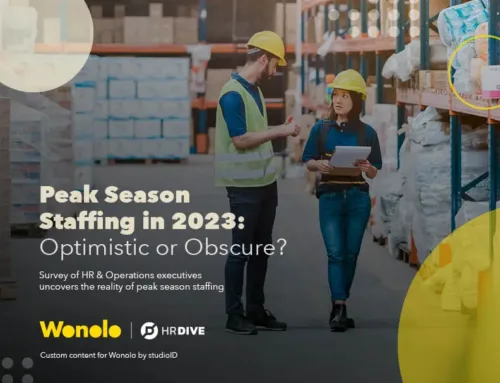Wonolo
The gig economy is revolutionizing the worldwide economy and the way we think about employment. More of us are taking control of our working lives, whether that’s earning some side income, using a gig marketplace, or building a career from freelance, temporary work.
The idea of a job for life now feels like a quaint relic — increased work mobility, technological changes, and shifts in how we see employment are all fuelling the massive upsurge in self-employment. Businesses are adapting too, using freelancers, gig workers, and an on-demand workforce to help them meet the challenges of the modern marketplace.
Whether you’re a dabbler in the gig economy, a part-time income earner, or you have a career built around freelancing, it’s vital to understand how the gig economy is changing. Read on to learn what it means for you.
The Main Ways to Take Part In the Gig Economy
There are several ways to get involved in the gig economy, and although some purists might argue about definitions, here are the four major areas as we see them:
- Traditional freelancing — creating a career around providing defined, contracted services for individuals and businesses. Freelancing is traditionally focused around creative professions like designers, writers, developers, photographers, etc.
- Gig marketplaces — these are the businesses getting most of the attention right now — Uber, Airbnb, Lyft, Fiverr, TaskRabbit, Postmates, Wonolo, etc.
- Self-Employed — this includes the self-employed like tradesmen, small business owners, and the like.
- Other areas — this is a “catch all” for other side hustles like blogging, selling on Amazon, Etsy, or ebay, affiliate marketing, and other income streams.
The Percentage of People Working in the Gig Economy
According to Intuit, the percentage of Americans in the gig economy was 34% in 2016, and is expected to grow to 43% by 2020. Consulting firm McKinsey says that there are currently around 68 million freelancers or self-employed in the US, with around 4 million Americans providing work through gig marketplaces like Lyft or Airbnb.
The freelance economy is growing three times faster than the overall US workforce.
Reasons for Taking Part in the Gig Economy
There are many reasons for the shift to gig and freelance work. For many, low median incomes and increased living and housing costs necessitates a secondary income. Older freelancers are using freelance and gig earnings to supplement their savings and pension plans, with only 14% enrolled in retirement savings plans through an employer.
Although unemployment is low, automation is also a threat to many jobs. An Oxford University study suggests that nearly half of American jobs will be threatened by automation over the next two decades. This is deeply felt in the workforce too, with 54% of the US workforce saying they were not confident their job would still exist in 20 years.
A combination of surveys from Intuit and LinkedIn tell us why gig workers and freelancers have made this a career choice:
- A portfolio of clients is more reliable than a single employer: 63%
- Earn more money and supplement income: 57%
- Create and control their own work and schedules: 46%
- Enhanced work and life balance: 35%
41% of freelancers surveyed said that they also have a permanent job in addition to their freelance work.
The Attitude of Gig Economy Workers
A significant majority of freelance and gig workers enjoy their work. The Intuit and LinkedIn surveys suggest:
- Highly-satisfied freelancers and gig economy workers: 50%
- Satisfied freelancers and gig economy workers: 17%
- Dissatisfied freelancers and gig economy workers: 23%
- Other: 10%
According to Forbes, 81% of on-demand workers plan to continue working in the gig economy. Nearly half of them plan to increase their freelance hours, while a third intend to work about as much. 63% of people are freelancing by choice, rather than necessity.
About 20 million freelancers do gig economy work because they are unable or unwilling to find better pay or jobs elsewhere. This implies that nearly 50 million are happy with the work they do and the pay their receive. Around 30% of part-time gig workers and freelancers would prefer a full-time job, according to a survey by Stride Health.
Ironically, the term “gig economy” isn’t actually preferred by the majority of freelancers and on-demand workers. One of the largest freelance marketplaces, Upwork, released a “Freelancing in America” report which said that 49% prefer “freelance economy,” 25% prefer “on-demand economy,” and 13% prefer “sharing economy.” “Gig economy” was preferred by only 10%.
Freelancers are also more likely to take part in ongoing education and training, with half re-skilling or updating their skills each year, compared to only a third of non-freelancers. 69% of freelancers also believe that freelancing is more respected as a career choice than it has been historically.
Growth in the Gig Economy
There are very positive signs that the freelance and gig economy is still growing rapidly.
- 71% of freelance workers said they had more work in 2017 than in 2016.
- 29% of freelancers worked full-time at a freelance career in 2017.
- Freelancers have an average of between four and five clients a month.
- Gig economy workers and freelancers contributed $1.4 trillion to the US economy annually.
- Growth in freelance workers is nearly doubling year-on-year, up from 1.3% in 2015 to 4.2% in 2017.
- If current trends continue, by 2027, more than half of the US workforce will do some form of freelance or gig work.
- The majority of gig economy and freelance job growth is driven by 18-34 year olds.
- 47% of Millennials freelance, more than any other generation.
- Businesses are increasingly hiring freelance workers to meet changes in demand, and to reduce labor costs like healthcare.
Earnings in the Gig Economy
One of the most interesting discoveries about the gig economy is how much people make from the gig economy marketplaces verus freelancing or running their own business. According to a survey from Earnest:
- For those doing gig-economy work as a side income, 85% made less than $500 a month.
- Airbnb hosts made more money than the other major marketplaces like Lyft, Uber, or TaskRabbit.
- Lyft and Uber drivers make around $400 a month.
- Over half of Airbnb hosts made more than $500 a month.
- TaskRabbit earners make three times what Fiverr earners do.
- Most Etsy and Fiverr earners made less than $100 a month from the side-gig.
This contrasts sharply with traditional freelancing. According to CareerCast, full-time freelancers can make significant yearly amounts, making them more mindful of their net income like big businesses would:
- Accountant – $67,290.
- Carpenter – $42,090.
- Delivery Truck Driver – $27,760.
- Interpreter/Translator – $44,343.
- Management Analyst – $81,320.
- Web Developer – $65,100.
- Software Developer – more than $100,000 per year.
As creators of one of a successful on-demand worker marketplace, we’re delighted to see this growth in the freelance economy. If you’re considering it as a secondary, or even primary income, we hope you’re inspired too.


![[Report] Beyond the Gig: Exploring Reliable Work Options for the Modern Workforce](https://info.wonolo.com/wp-content/uploads/2023/10/Worker-Preferences-Report-Header-Image-500x383.png)



